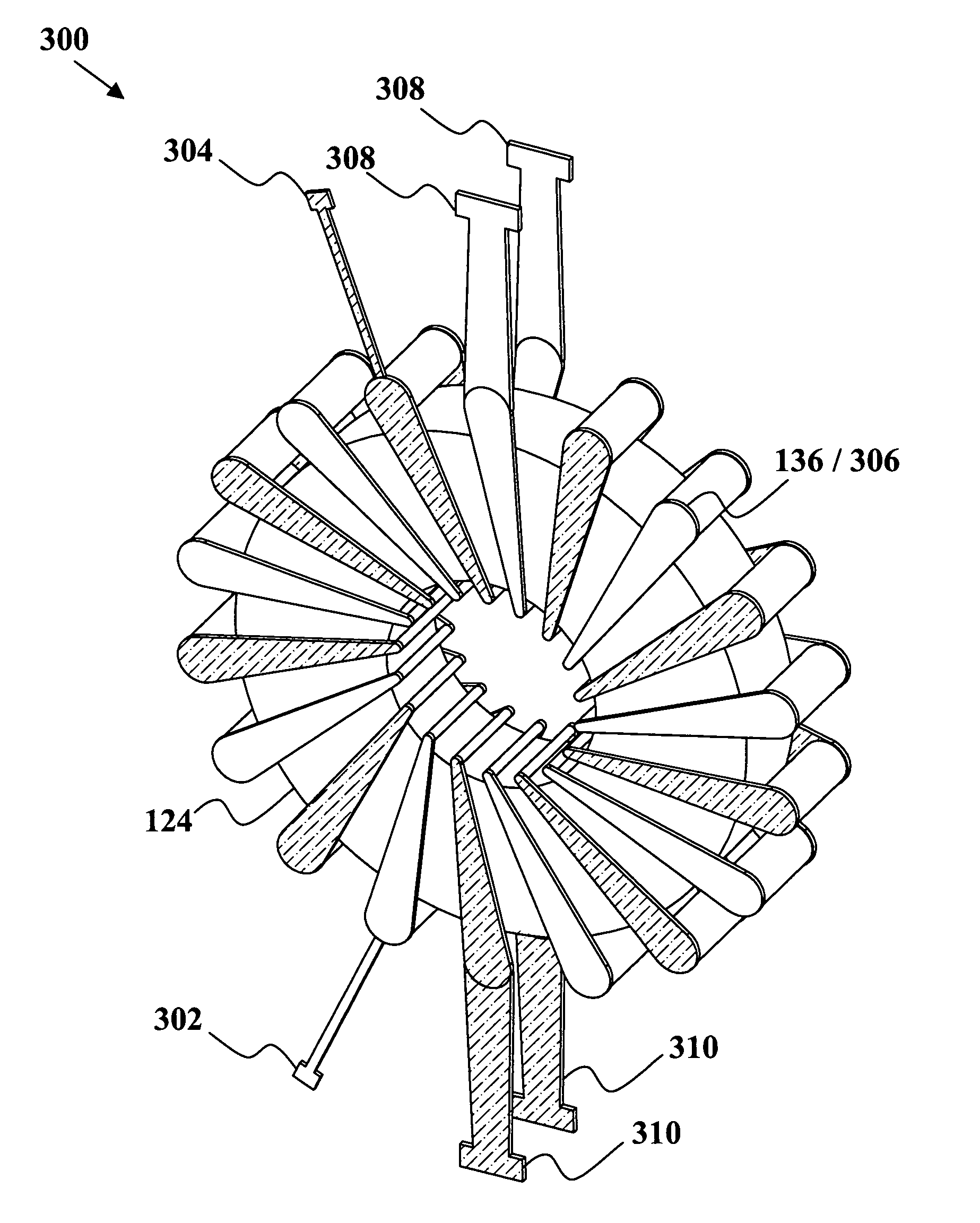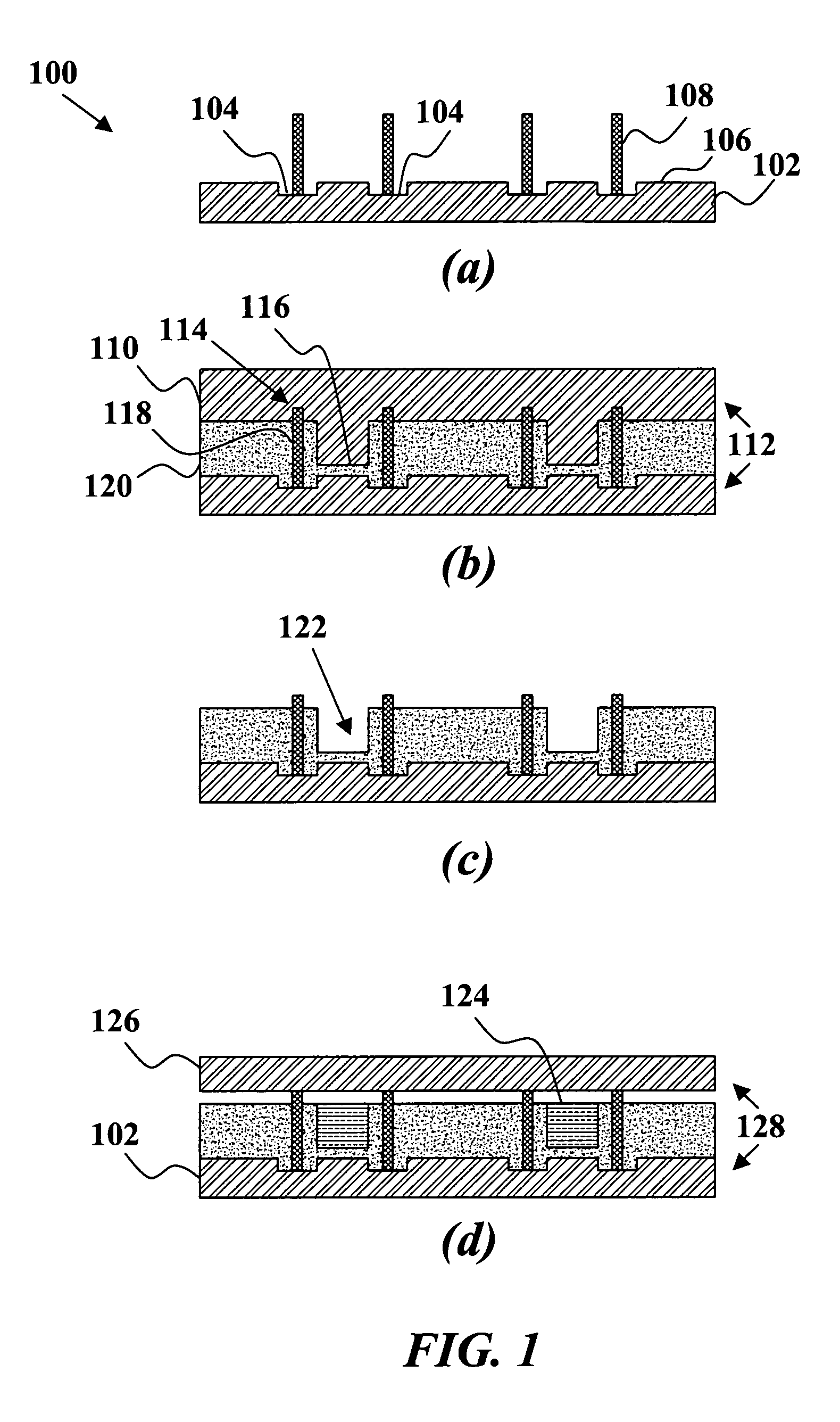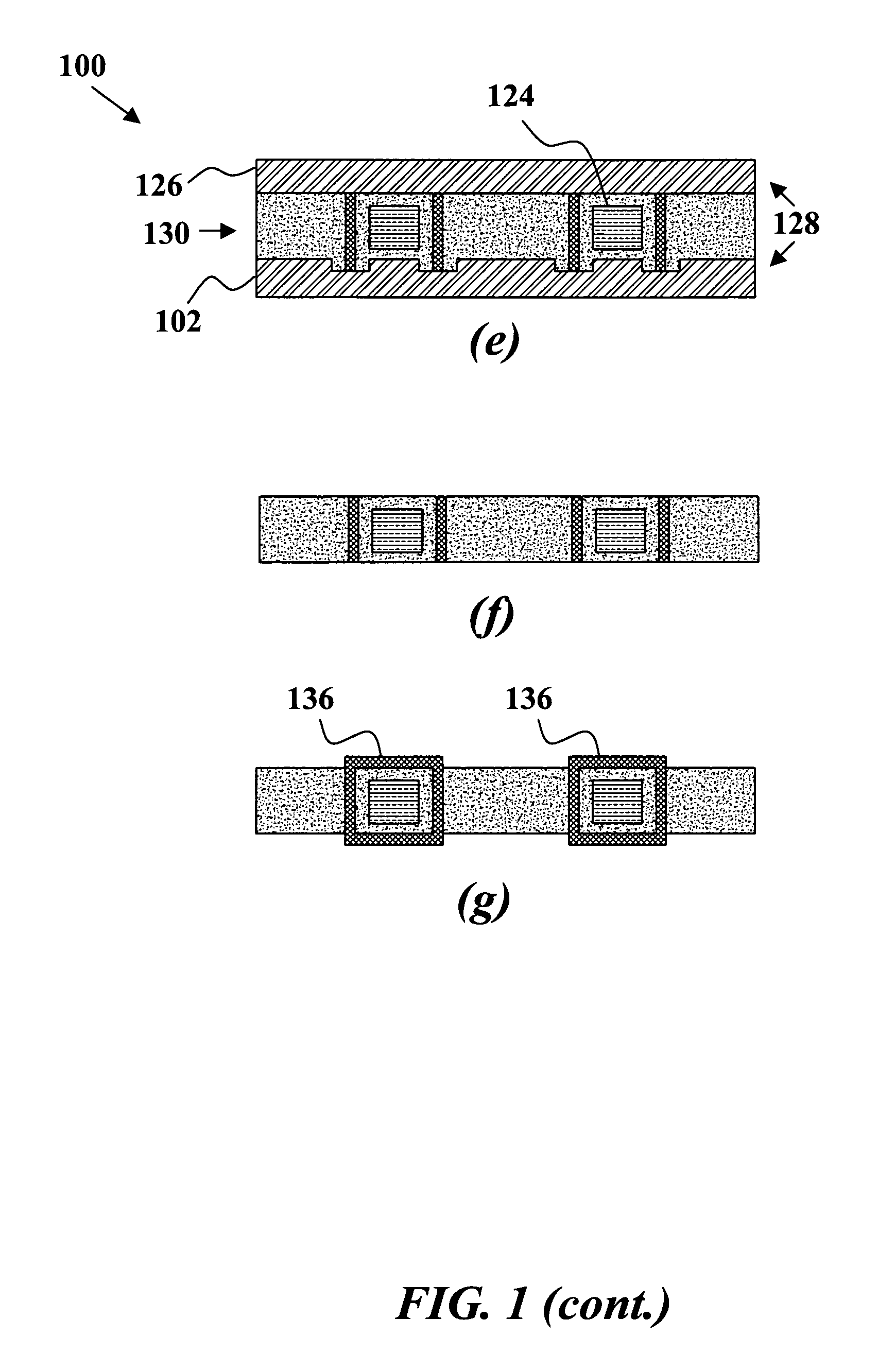Wideband planar transformer
a planar transformer and wideband technology, applied in fixed transformers, magnets, magnetic bodies, etc., can solve the problems of poor return loss and insertion loss of prior art planar transformers over a wide frequency range, limited use of low speed or narrow band applications, and insufficient application of prior art approaches. , to achieve the effect of accurately designed and adjusted, reducing the permeability of the core, and reducing the reflected energy and loss
- Summary
- Abstract
- Description
- Claims
- Application Information
AI Technical Summary
Benefits of technology
Problems solved by technology
Method used
Image
Examples
Embodiment Construction
[0024]Although the following detailed description contains many specifics for the purposes of illustration, anyone of ordinary skill in the art will readily appreciate that many variations and alterations to the following exemplary details are within the scope of the invention. Accordingly, the following preferred embodiment of the invention is set forth without any loss of generality to, and without imposing limitations upon, the claimed invention.
[0025]Creating a wideband planar transformer according to the current invention requires the use of several different concepts together in one design. The current method uses physical design and layout aspects that enable the conductors to be inter-wound around the ferrite material and adjacent conductors. In wideband applications, conductor spacing is critical as the frequency increases, where at low frequencies the ferrite material will provide sufficient coupling but at frequencies above several hundred megahertz the ferrite permeabili...
PUM
| Property | Measurement | Unit |
|---|---|---|
| voltage | aaaaa | aaaaa |
| frequencies | aaaaa | aaaaa |
| impedance | aaaaa | aaaaa |
Abstract
Description
Claims
Application Information
 Login to View More
Login to View More - R&D
- Intellectual Property
- Life Sciences
- Materials
- Tech Scout
- Unparalleled Data Quality
- Higher Quality Content
- 60% Fewer Hallucinations
Browse by: Latest US Patents, China's latest patents, Technical Efficacy Thesaurus, Application Domain, Technology Topic, Popular Technical Reports.
© 2025 PatSnap. All rights reserved.Legal|Privacy policy|Modern Slavery Act Transparency Statement|Sitemap|About US| Contact US: help@patsnap.com



